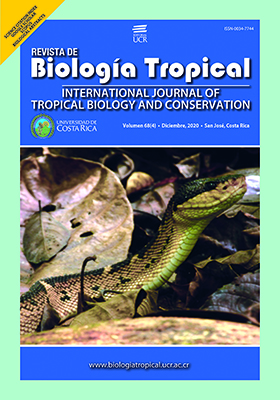Abstract
Abstract. Introduction: Rehabilitation of hermatypic coral species that have declined in the Caribbean in recent decades is a priority. Production of sexual recruits is considered the best restoration method to aid affected populations. Objective: To gain knowledge of early life stages of Orbicella faveolata and to enhance production of new sexual recruits. Methods: Gamete bundles from the coral species O. faveolata were collected over three years (2016, 2018, and 2019) from Los Corales del Rosario y de San Bernardo Natural National Park, Cartagena, Colombia. Assisted fertilization, larval rearing, settlement (onto crustose coralline algae, CCA) and post settlement survival in laboratory conditions were monitored. Results: Embryonic and larval development were documented over 55 hours after the first cleavage, when larvae were fully developed and started pre-settlement behavior. Settlement began 7 days after first cleavage and after 37 days polyps had acquired zooxanthellae. Larval settlement was higher on Lythophyllum congestum and Titanoderma prototypum than in response to Porolithon pachydermum, Neogoniolithon sp., Hydrolithon sp., and Lythophyllum sp. Larvae did not settle on dead coral or on the negative control (sterilized seawater). After the first week post settlement survival was 59 % amongst O. faveolata recruits. During the second week, survival dropped to 42 %, and was further reduced to 0 % at the end of the third week. Conclusions: O. faveolata larvae require cues from certain CCA species to settle, they do not settle in absence of CCA. Increased larvae availability is possible through assisted fertilization in the laboratory, however, due to the high mortality in early post-settlement phases, additional research needs to be conducted in order to scale up larvae production and improve understanding of the cues that enhance settlement and the factors which cause post-settlement mortality.
##plugins.facebook.comentarios##

This work is licensed under a Creative Commons Attribution 4.0 International License.
Copyright (c) 2020 Elvira M. Alvarado-Chacón, Luis A. Gómez-Lemos, Nireth P. Sierra-Sabalza, Ana M. Hernández-Chamorro, Juan P. Lozano-Peña, Camilo A. Valcárcel-Castellanos, Valeria Pizarro, Rocío García-Ureña, Juan C. Zárate-Arévalo, Jaime A. Rojas



